In the introduction to his new self-published book of vernacular photography and tourist postcards, “In Situ: American Folk Art in Place,” archivist and collector Jim Linderman, who’s known for his Dull Tool Dim Bulb blog, warns that these images he’s gathered “don’t belong together at all. My arbitrary curating criteria is a falsehood.”
“You know, he is kind of eccentric, and his yard is full of all sorts of things.”
Yet his oddball collection makes perfect sense: When wandering North America’s highways and backroads in the 20th century, you could have stumbled upon any one of these landmarks. They’re the sort of things that make you stop and exclaim, “What IS that!?” Sometimes it’s an obvious advertisement, a come-on for gawkers or tourist dollars—“Come see The World’s Largest Chair!” Other times, it’s an object-filled front yard of the town eccentric, whether he or she is obsessed with windmills, birdhouses, or the Second Coming of Jesus Christ. There are Uncle Sam mailboxes, straw-stuffed scarecrows, truck-stop dinosaurs, sand sculptures, hand-painted signs, parade floats, toothpick sculptures, and even early art cars—anything made by self-taught artists, or what we now call folk art, in its original, intended context.
While most of the images are old postcards and vintage found photos, some were taken by Linderman himself. In the introduction, he explains his method: “One trick during my folk-art picking days was to stop at the local post office and say I was a working photographer sent to document a place I could not find. ‘You know, he is kind of eccentric, and his yard is full of all sorts of things.’ As often as not, the clerks would come up with an answer. ‘Oh, yeah, the one on Jackson Street with the carvings!’ Many towns had a fellow who qualified and many still do.”
(To buy a copy of “In Situ: American Folk Art in Place,” go here. Follow Jim Linderman’s folk art collection at Dull Tool Dim Bulb and on Collectors Weekly’s Show and Tell.)

Jim Linderman’s In Situ: American Folk Art in Place, cover design by Shannon Regan.




















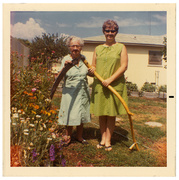
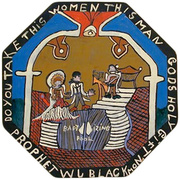 Homespun Beauty: Jim Linderman on Folk Art’s Authentic Appeal
Homespun Beauty: Jim Linderman on Folk Art’s Authentic Appeal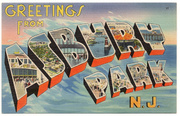
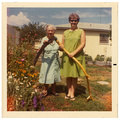 Take That, Instagram: The Enduring Allure of Vintage Snapshots
Take That, Instagram: The Enduring Allure of Vintage Snapshots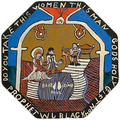 Homespun Beauty: Jim Linderman on Folk Art’s Authentic Appeal
Homespun Beauty: Jim Linderman on Folk Art’s Authentic Appeal When Postcards Made Every Town Seem Glamorous, From Asbury Park to Zanesville
When Postcards Made Every Town Seem Glamorous, From Asbury Park to Zanesville PostcardsPostcards, sometimes spelled out in two words as "post cards," emerged duri…
PostcardsPostcards, sometimes spelled out in two words as "post cards," emerged duri… PhotographsFrom Mathew Brady's Civil War photos to Ansel Adams' landscapes to Irving P…
PhotographsFrom Mathew Brady's Civil War photos to Ansel Adams' landscapes to Irving P… Mari Tepper: Laying it on the Line
Mari Tepper: Laying it on the Line Nice Ice: Valerie Hammond on the Genteel Charm of Vintage Canadian Costume Jewelry
Nice Ice: Valerie Hammond on the Genteel Charm of Vintage Canadian Costume Jewelry How Jim Heimann Got Crazy for California Architecture
How Jim Heimann Got Crazy for California Architecture Modernist Man: Jock Peters May Be the Most Influential Architect You've Never Heard Of
Modernist Man: Jock Peters May Be the Most Influential Architect You've Never Heard Of Meet Cute: Were Kokeshi Dolls the Models for Hello Kitty, Pokemon, and Be@rbrick?
Meet Cute: Were Kokeshi Dolls the Models for Hello Kitty, Pokemon, and Be@rbrick? When the King of Comedy Posters Set His Surreal Sights on the World of Rock 'n' Roll
When the King of Comedy Posters Set His Surreal Sights on the World of Rock 'n' Roll How One Artist Makes New Art From Old Coloring Books and Found Photos
How One Artist Makes New Art From Old Coloring Books and Found Photos Say Cheese! How Bad Photography Has Changed Our Definition of Good Pictures
Say Cheese! How Bad Photography Has Changed Our Definition of Good Pictures Middle Earthenware: One Family's Quest to Reclaim Its Place in British Pottery History
Middle Earthenware: One Family's Quest to Reclaim Its Place in British Pottery History Fancy Fowl: How an Evil Sea Captain and a Beloved Queen Made the World Crave KFC
Fancy Fowl: How an Evil Sea Captain and a Beloved Queen Made the World Crave KFC
Scars me alot, but very intresting….